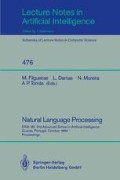Abstract
We have shown that in GB theory X-bar theory plays a crucial role.
In the first place, it constrains the format of syntactic representations in a radical way, thus allowing Grammar to do without specific phrase structure rules (except for a residue of language particular phenomena), and contributing “to account for the relative ease of language acquisition and the impossibility of certain language types”. At the same time, since some of its principles are associated with parameters, X-bar theory is a flexible enough tool to account for language variation.
In the second place, X-bar theory makes it possible to “translate” into configurational terms lexical properties on which are based distinctions between arguments and adjuncts; moreover, the translation of such properties into configurational terms makes it possible to distinguish structurally between external and internal arguments — a distinction that is well supported by empirical facts.
Finally, X-bar theory (together with c-command or some of its variants) provides the referential frame for the formulation of local relations (e.g., government, proper government, Case-assignment, ϑ-assignment) and of local domains (e.g., for movement and binding). In particular, the distinction between lexical and functional heads plays a crucial role in the definition of barriers for government and movement.
Preview
Unable to display preview. Download preview PDF.
References
See [Lasnik and Saito, 1984].
See [Travis, 1989].
See [Chomsky, 1986b] p. 82; for a somewhat more formal definition of the Projection Principle, see [Chomsky, 1981] p. 38.
See [May, 1977], [May, 1985].
X-bar theory — or, as it was then called, ‘X-bar notation’ — was proposed in [Chomsky, 1970] as part of an attempt to establish a new division of labour between lexicon and syntax in the model of grammar (see [Chomsky, 1970]; see also a similar proposal in [Harris, 1951], chapter 16, referred to in [Chomsky, 1970] p. 54). Besides providing a way to express base structures compatible with the lexicalist hypothesis, X-bar theory worked as a powerful constraint on phrase-structure rules: in this respect, it played a role similar to the one the Tensed-S Condition, the Specified Subject Condition and the Subjacency Condition played in constraining transformational rules (see [Chomsky, 1973]).
See [Stowell, 1981] p. 70.
For a view where succession only holds of non-lexical, that is functional, projections, see [Fukui and Speas, 1986].
S-selection stands for semantic selection, that is, the semantic (= thematic) role(s) a lexical item assigns; c-selection stands for categorial selection, that is, the syntactic category occupying the position to which that lexical item assigns a specific ϑ-role. See [Chomsky, 1986b] p. 86.
But see [Abney, 1987] and [Fukui and Speas, 1986] for the view that determiners, quantifiers and degree phrases are functional heads.
For the analysis of these constructions in Portuguese see [Duarte, 1987], [Duarte, 1989].
See [Kayne, 1983].
According to [Kayne, 1983], X is S — what would now be considered a small clause, that is, a predication domain distinct from a sentence.
The D-structure corresponding to Figure 15 is, according to [Larson, 1988], [VP [NP a book [V' [V give [PP Mary]]] Crucially, in his analysis, the double object construction is a result of a process of argument demotion, where NP2 is demoted and hence occurs as a V' adjunct.
See [Koopman and Sportiche, 1988] for more details.
See, for instance, [Aoun and Sportiche, 1982].
See [Chomsky, 1986a] p. 8.
See [Chomsky, 1986a] p. 8.
See [Belletti and Rizzi, 1981]. An interesting piece of evidence supporting this claim is provided by the distribution of the inflected infinitive in European Portuguese — see [Raposo, 1987].
On the contrary, it has been claimed that, in English, prepositions are accusative Case assigners. See [Kayne, 1981].
In languages where I is specified for Tense and Agreement, the unmarked option seems to be the following one: if I is [-T], then it is [-AGR]; in this respect, Portuguese represents the marked option, since in [-T] contexts, I may be [+ AGR] — that is what happens in inflected infinitive contexts. See [Raposo, 1987].
See [Raposo, 1987].
See [Chomsky, 1986a] p. 4. This requirement calls to mind Emonds's Structure Preserving Condition.
See [Sportiche, 1988].
See [Fukui and Speas, 1986].
See [Fukui and Speas, 1986] p. 154–55.
[Chomsky, 1986a] has proposed to generalize X-bar theory to the COMP system. See [Chomsky, 1986a] p. 3.
See [Abney, 1987].
See [Chomsky, 1986a] p. 8.
See [Lasnik and Saito, 1984] p. 240. Some authors have claimed that the ECP should have a conjunctive and not a disjunctive formulation — that is, that both lexical and antecedent government should be needed for the trace licensing. We will adopt here the disjunctive version along the lines of [Lasnik and Saito, 1984].
[Pollock, 1989] derives this difference from the status of AGR in French (more generally, in Romance languages) and in English.
See [Chomsky, 1982] p. 20.
In fact, if we want Principle C to apply to variables we have to formulate it along the following lines: an R-expression is free in the domain of the operator that locally A'-binds it. It should also be noted that in equative sentences (e.g., eu sou a Maria (= I am Maria)) Principle C is cancelled — cf. [Evans, 1980]. The same is true of sentences with predicates like Portuguese chamar-se or French s'appeler (e.g., chamo-me Maria, je m'appelle Maria — literally I call myself Maria).
See [Chomsky, 1981] p. 211.
Author information
Authors and Affiliations
Editor information
Rights and permissions
Copyright information
© 1991 Springer-Verlag Berlin Heidelberg
About this paper
Cite this paper
Duarte, I. (1991). X-bar theory: Its role in GB theory. In: Filgueiras, M., Damas, L., Moreira, N., Tomás, A.P. (eds) Natural Language Processing. EAIA 1990. Lecture Notes in Computer Science, vol 476. Springer, Berlin, Heidelberg. https://doi.org/10.1007/3-540-53678-7_3
Download citation
DOI: https://doi.org/10.1007/3-540-53678-7_3
Published:
Publisher Name: Springer, Berlin, Heidelberg
Print ISBN: 978-3-540-53678-9
Online ISBN: 978-3-540-46975-9
eBook Packages: Springer Book Archive

